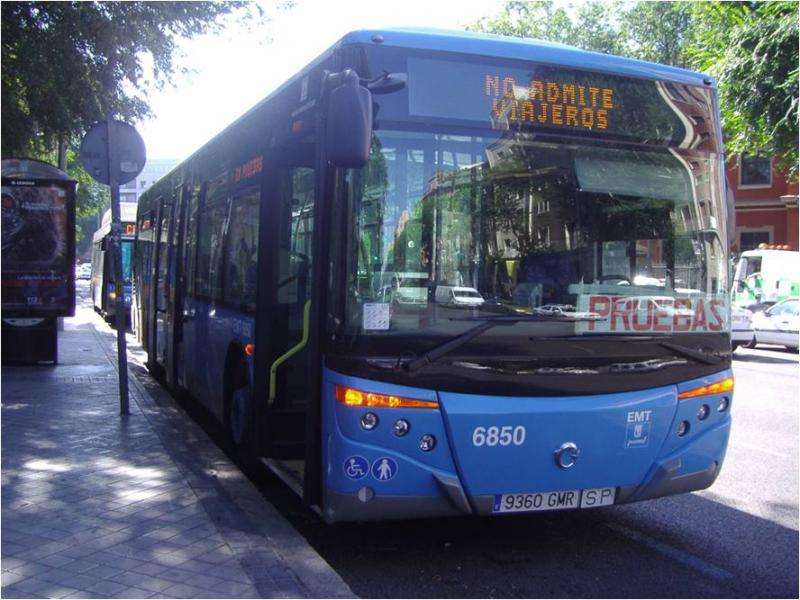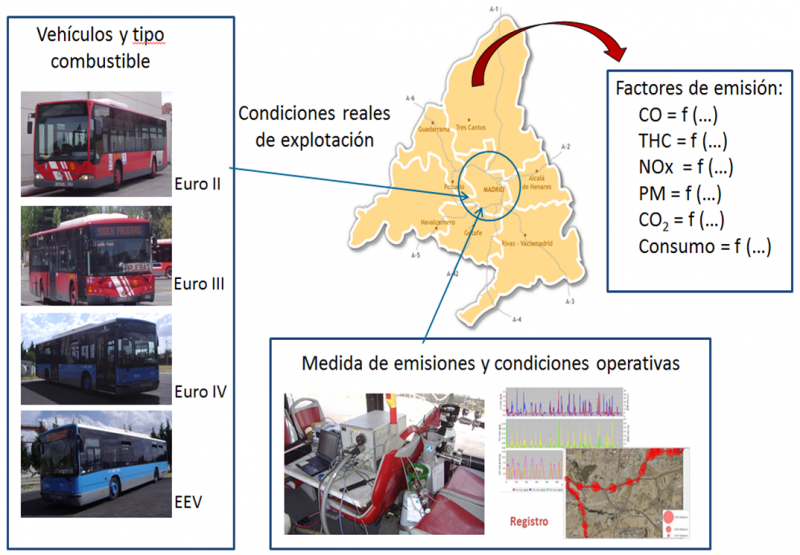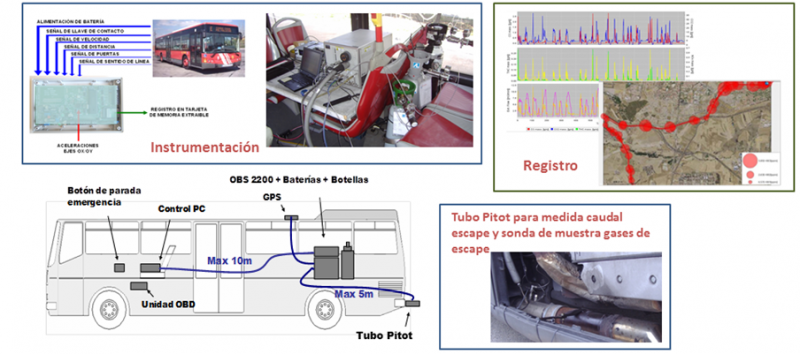New method developed to find out the emissions of an urban bus fleet

Researchers from INSIA (UPM) have developed a new methodology to evaluate the consumption and emissions of urban buses in Madrid using on-board equipment and statistical methods.
The validated model assesses the effect that certain modifications may have on a bus fleet. This can be of a great help when the time comes to renovate fleets.
Modelling the pollutant emissions produced by mobile sources requires detailed data of traffic conditions. This information might come from either default models for a road network or direct measures with on-board equipment. This last technique was the method used by the UPM researchers to quantify the emissions of urban buses in Madrid.
After three years of collaboration with EMT and the City Council of Madrid, the INSIA researchers have developed ECOTRAM, a mode validated based on the results obtained during tests carried out on a selection of bus lines considered representative of the whole fleet.
In order to select the vehicles for the study and the bus lines for the experimental campaign, the researchers applied sampling techniques. A cluster analysis was used to select a set of bus lines. Thus, these sets were put together in clusters of similar kinematic variables. As a result, the lines within each cluster lead to similar average results of both emissions and consumption. Therefore, the results can be extrapolated to the rest of lines of each cluster, obtaining global estimations of the whole fleet.

The researchers took into account numerous variables to select the vehicles of the sampling to measure the emissions and consumption. The measures were carried out on buses of different European emission standards (Euro II, III, IV y CNG) with natural gas, diesel and biodiesel. In addition, in order to study the occupancy levels, they took into account three load states: empty, half load and full load. Onboard monitoring equipment measured carbon dioxide (CO2) and other pollutants (CO, THC, NOx).
With the experimental measurements, the researchers analyzed the emission factors that best relate the emissions and consumption to the kinematic variables of the driving cycle (speed, stop time and slope), the vehicle lodge state and altitude. Finally, these factors were applied and extrapolated to the rest of the lines of the bus fleet, obtaining the consumption and emissions of the whole fleet.

According to José María López, a researcher of this project, the ECOTRAM model allows researchers to accurately assess the effect of possible modifications in the vehicle fleet under study. Some examples of these modifications can be either the type of monitoring, the type of fuel or the route of the bus lines.
More information: José M. López-Martínez et al. Modelling the fuel consumption and pollutant emissions of the urban bus fleet of the city of Madrid, Transportation Research Part D: Transport and Environment (2017). DOI: 10.1016/j.trd.2017.02.016
Provided by Universidad Politécnica de Madrid




















